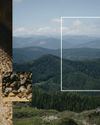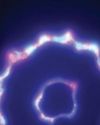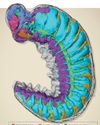
AARON WIGHTMAN WAS ALMOST BORN IN A SUGARHOUSE.
It was early April, and his parents were boiling maple sap in the Western New York shack where they produced syrup and other maple-flavored goods. "It was pretty rustic," Wightman says, "with just enough power for some lightbulbs." In other words, not the ideal place for his mother to go into labor.
Fortunately, the labor pains turned out to be a false alarm, and Wightman was born a few days later in the hospital-but it wasn't long before he was back in the sugarhouse. As a toddler, he crawled near the steamy wood-fired boilers his father tended over, sometimes all night. By the time he was 10 years old, Wightman was trudging through the woods, collecting hundreds of sap-filled buckets by hand.
Most of us, when we think about maple syrup, picture rosy-cheeked New Englanders dressed in buffalo plaid, tree trunks slung with galvanized buckets, and steam pouring from a rudimentary shack tinseled with icicles. As it turns out, our imaginations are a little outdated. These days, maple sugaring is less of a handicraft and more of a science, as new equipment has enabled producers to make more maple syrup-and money-faster and easier, no all-nighters necessary.
Wightman has graduated from the family sugarhouse to the Cornell Maple Program, where he oversees 7,800 tapped trees across four miles of an experimental forest outside of Ithaca, New York. During sugaring season, the program's Arnot Maple Lab produces 400 gallons of syrup a day, a volume unthinkable just two decades ago, now made possible by stateof-the-art technology.
Diese Geschichte stammt aus der September - October 2024-Ausgabe von Popular Mechanics US.
Starten Sie Ihre 7-tägige kostenlose Testversion von Magzter GOLD, um auf Tausende kuratierte Premium-Storys sowie über 8.000 Zeitschriften und Zeitungen zuzugreifen.
Bereits Abonnent ? Anmelden
Diese Geschichte stammt aus der September - October 2024-Ausgabe von Popular Mechanics US.
Starten Sie Ihre 7-tägige kostenlose Testversion von Magzter GOLD, um auf Tausende kuratierte Premium-Storys sowie über 8.000 Zeitschriften und Zeitungen zuzugreifen.
Bereits Abonnent? Anmelden

ONE OF THE 'GREATEST THREATS' TO THE PACIFIC NORTHWEST ISN'T WHAT YOU THINK.
EXPERTS ARE PREPARING THE REGION AGAINST THE THREAT OF DANGEROUS VOLCANIC MUDFLOWS, KNOWN AS LAHARS, WHICH COULD INUNDATE THE COMMUNITIES SURROUNDING MT. RAINIER IN AS LITTLE AS 30 MINUTES.

THE WORLD'S TOUGHEST ROW
They rowed 3,000 miles across the Atlantic, battling unpredictable weather, chaotic seas, and finicky equipment. But what they discovered gave them profound new insights into the power of the ocean.

HOW TO DIY OFF-GRID SOLAR
SPEND THE TIME UP FRONT AND PLAN IT CAREFULLY TO AVOID DISAPPOINTMENT

Are We on the Verge of an ARMS RACE in SPACE?
RUMORS OF A RUSSIAN SPACE NUKE, ALONG WITH OTHER SATELLITE-TARGETING WEAPONS, HAVE MADE GEOPOLITICAL TENSIONS EXTEND INTO ORBIT.

Fresh Fingerprints on an Ancient Statue
A CLAY FIGURINE HAS SPENT MILLENNIA incomplete, waiting at the bottom of a lake for its long-dead craftsman to finish the Iron Age-era statuette.

Quantum Entanglement in Our Brains
IT HAS LONG BEEN ARGUED THAT THE human brain is similar to a computer. But in reality, that's selling the brain pretty short.

The Tools of Copernicus
WAY BACK IN 1508, WITH ONLY LIMited tools at his disposal, Nicolaus Copernicus developed a celestial model of a heliocentric planetary system, which he described in hist landmark work De revolutionibus orbium coelestium. It was a complete overhaul of our conception of the universe-one that, unfortunately, earned him the ire of the Catholic church for decades after his death-and forever changed the way we look at the stars.

Building a Sixth-Generation Bomber Raptor
THE GLOBAL COMBAT AIR Programme (GCAP)-a project by the U.K., Italy, and Japan to develop a sixth-generation stealth fighter-has been busy at the drawing board reshaping its vision of the future of air warfare. And judging by the new concept model unveiled at this year's Farnborough air show, that future has big triangular wings.

The Electroweak Force of the Early Universe
TODAY, THE UNIVERSE AS WE KNOW IT IS governed by four fundamental forces: the strong nuclear force, the weak nuclear force, electromagnetism, and gravity.

This Ancient Fossil With a Brain and Guts
WE KNOW WHAT FOSSILS LOOK like. For example, typical dinosaur fossils are bones turned to stone and preserved from the passage of time, located, if we're particularly lucky, in large collections that can be reassembled to represent the beast they used to prop up in their entirety.